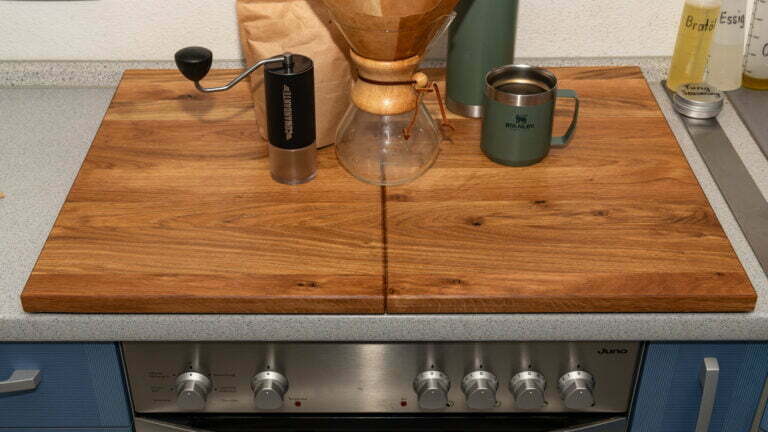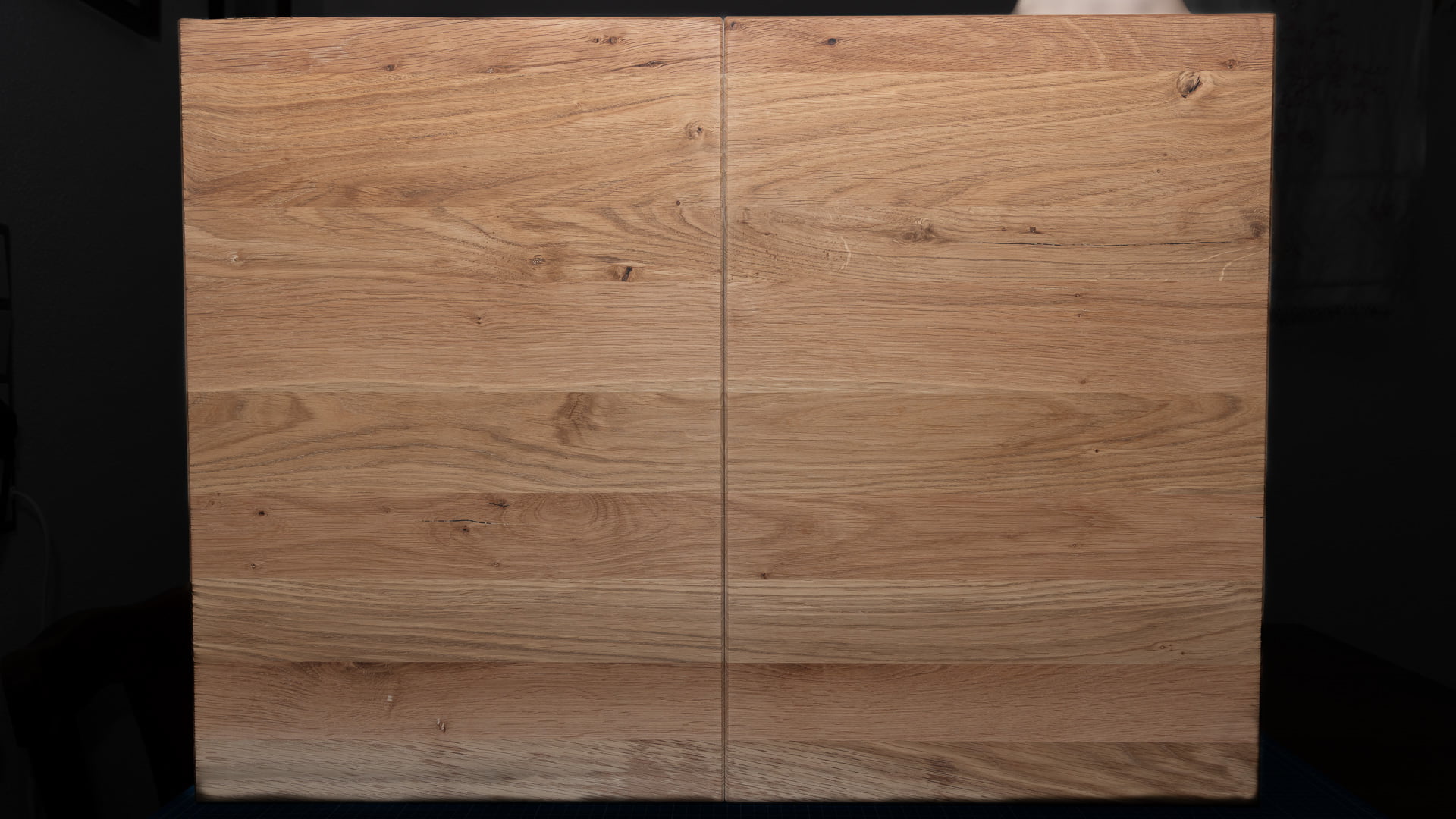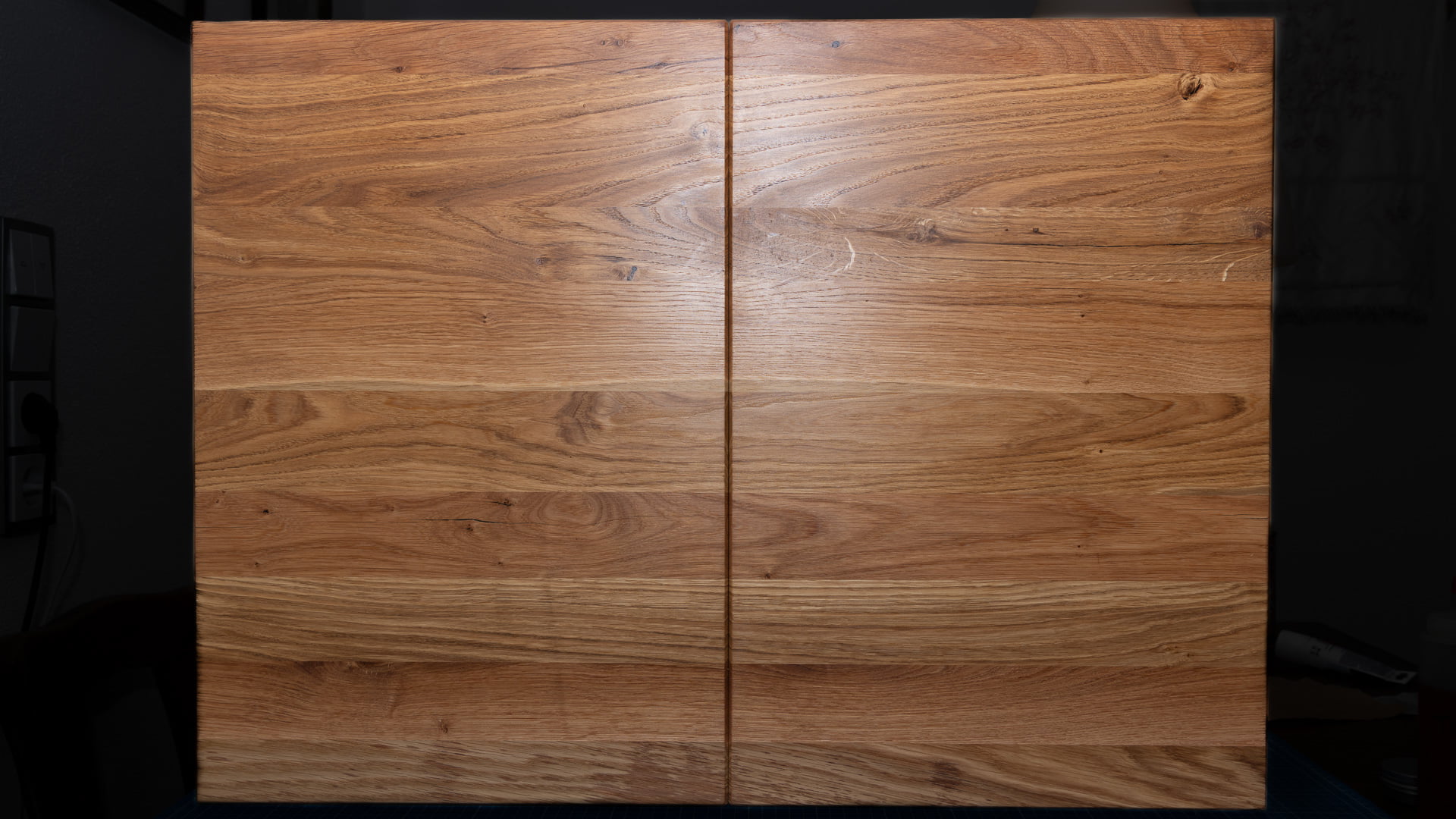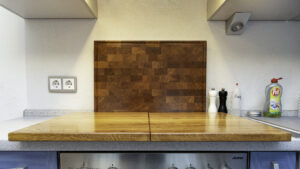
Oak Stovetop Cover
I was happy with the end-grain oak cutting board made by Holz Liebling and decided to get a second item from them, an oak stovetop cover to go over the glass heating surfaces and give me another surface to work with. I could use this for light cutting jobs and for mixing bread dough and other food-preparatory tasks.
Once again, I requested that the board be delivered without its coating of boiled Linseed oil so that I could build up a protective set of layers of Tung oil. Since pure Tung oil is very slow to dry and relatively viscous, I diluted the first six layers with 50% citrus solvent. This is food-safe and thins the oil down sufficiently to let it penetrate a bit deeper. The final 4 layers were done with pure Tung oil. I waited 2 days for each successive layer to cure sufficiently and wiped almost all of the new layer off with paper towels or cotton rags. But it was worth the effort, as can be seen in the before-and-after slider below:


Stove Cover oiling
Can’t stop
I’ve continued added 50% pure Tung oil / 50% citrus solvent layers to both sides of the oak stovetop cover. This has been going on for months. Each layer is applied as thinly as possible with a barely wetted cloth.

Then I let it dry for several days before doing the same to the other side. These extremely thin layers to time to build up, but the end result is impressive. The final layer was done with 1500 grit sandpaper and then I applied a homemade wax solution (50% carnauba, 50% beeswax in a citrus-solvent base)
